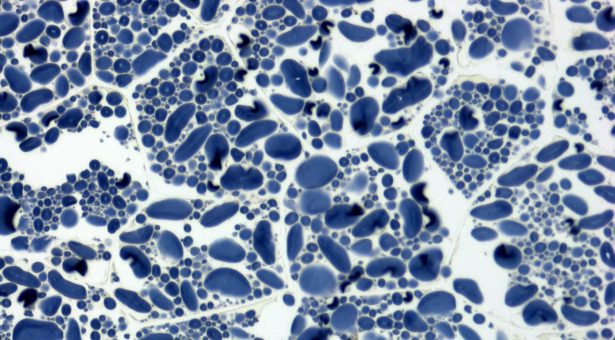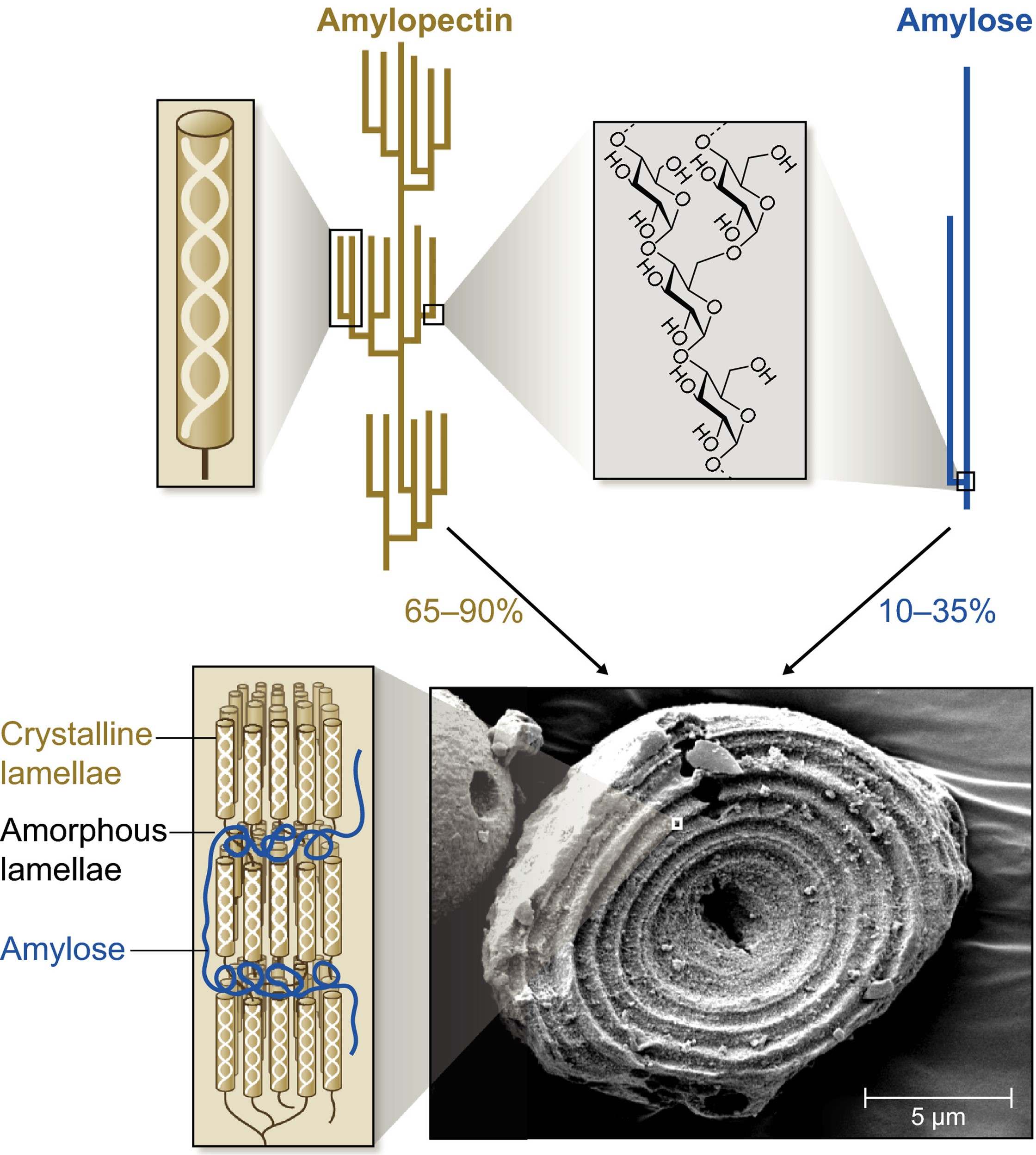Seung lab

As one of the most important plant products in our daily lives, starch is all around us. It is the major calorific component of our staple foods, such as wheat, rice and potatoes. We are studying the molecular mechanisms of how plants make starch.
Starch plays a crucial role in plants as the major form of carbohydrate storage. Most plants use starch reserves to generate metabolic energy in the dark when photosynthesis is not possible. Growth of plants during the night, or of seedlings underground before they emerge from the soil, is often fuelled by starch.
Starch is made within the plastids of plant cells as insoluble semi-crystalline granules with complex structure and morphology. These granules are composed solely of glucose molecules that are linked together in polymers. Two distinct polymers occur within starch – amylopectin and amylose.

The molecular architecture of starch granules. Starch contains two glucose polymer components – amylopectin and amylose. Both polymers have α-1,4-linked linear chains and α-1,6-linked branch points. Amylose is primarily linear and has very few branches. The branched structure of amylopectin allows adjacent chains to form double helices that pack into crystalline lamellae, while branch points reside in amorphous lamellae. Alternating crystalline and amorphous lamellae give rise to the semi-crystalline starch granule matrix. Large growth rings (each containing many alternating crystalline/amorphous lamellae) are visible in the scanning electron micrograph of a broken, partially digested potato starch granule. Figure and caption from Seung (2020) (https://doi.org/10.1111/nph.16858).
We are unravelling the molecular processes that facilitate the formation of starch granules in the plastid. We study these processes in model plants like Arabidopsis and Brachypodium, as well as major crops like wheat and potato.
The identification of key components involved in starch synthesis will ultimately lead to novel approaches to improve the cooking, processing and/or nutritional quality of our starch crops.
Current research includes;
- Understanding the mechanism of starch granule initiation
- Identify genes that underpin diversity in starch granule morphology and composition
- Develop novel approaches to improve the quality of starch crops
You can see a full list of Seung lab publications here.
Photos of life in the Seung lab.

